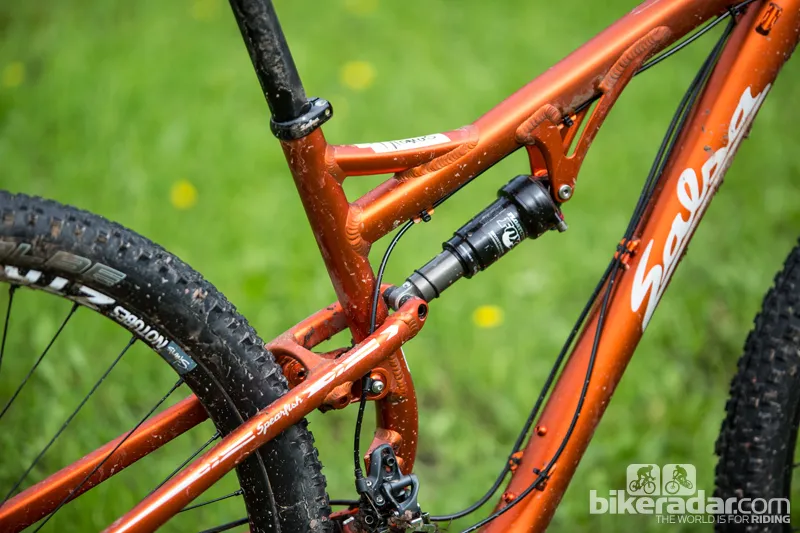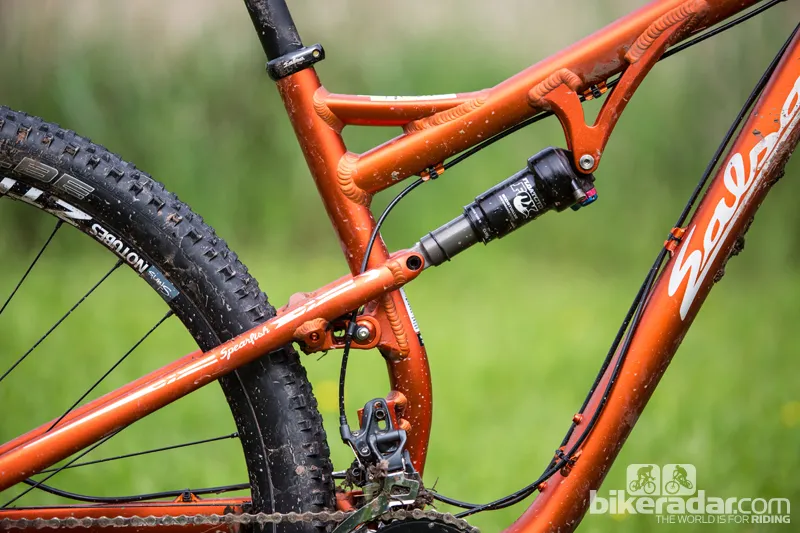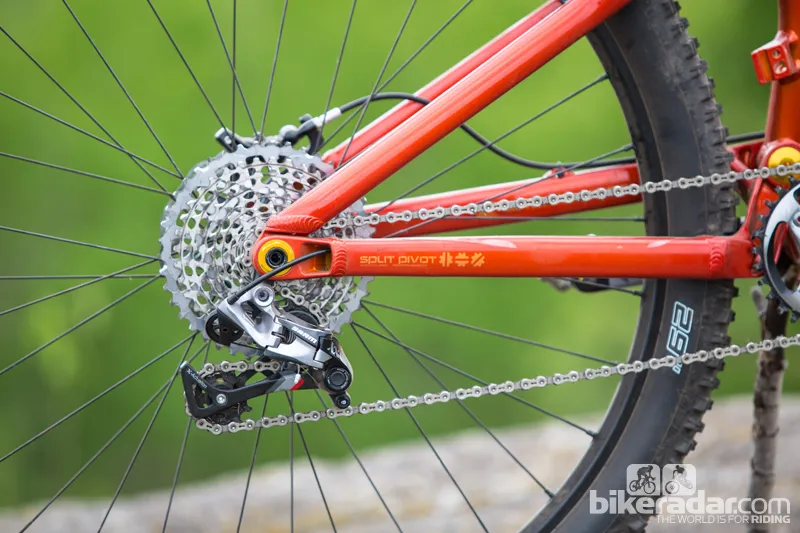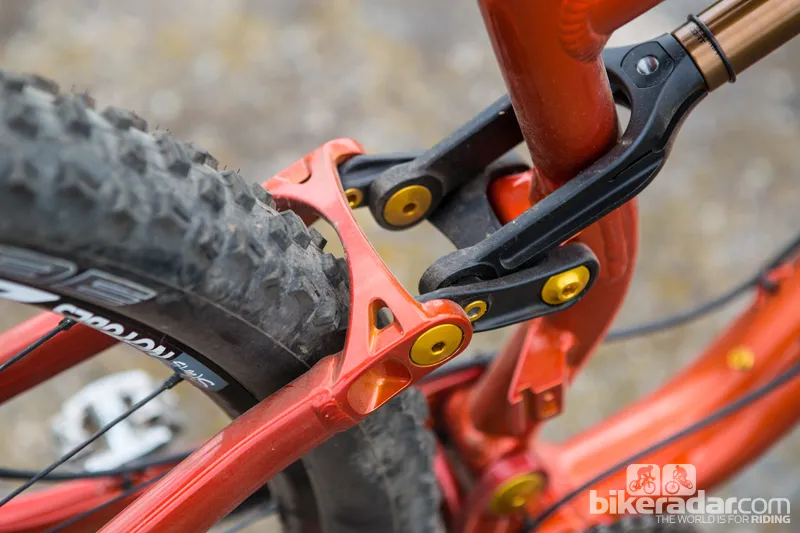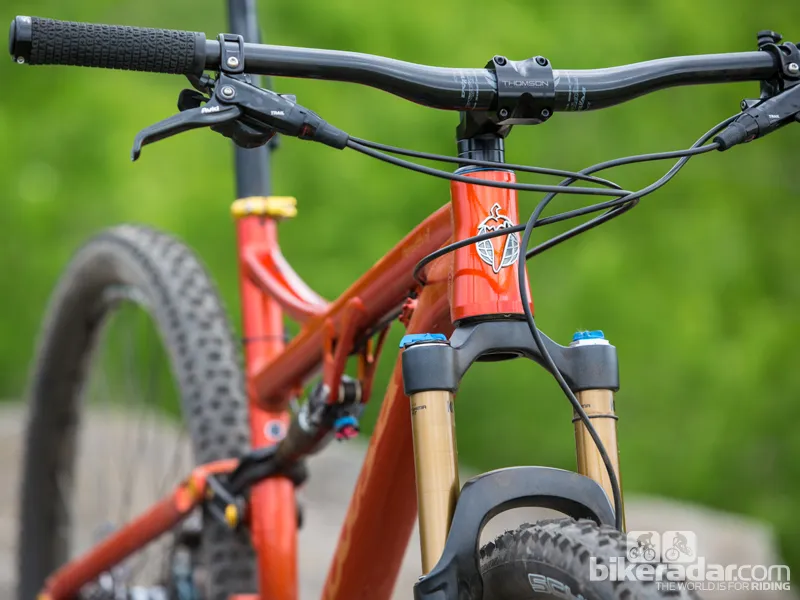Salsa Cycles has carved out a niche for itself by developing bikes to explore the trails and roads less traveled. Its fat bikes and adventure touring rigs have overshadowed the Bloomington, Minnesota-based company’s more traditional mountain bikes in recent years. That may change with the introduction of the redesigned cross-country race bike, the Spearfish, and trail-oriented Horsethief. Salsa partnered with suspension designer Dave Weagle to update these two 29ers using Weagle’s Split Pivot rear suspension.
Shared updates
The Spearfish and Horsethief were shorter and longer travel versions of one another to begin with, so it’s no surprise that the changes these siblings received are very similar. Salsa set out to improve suspension performance, increase frame stiffness and incorporate more progressive geometry, while keeping their intended uses—endurance racing and backcountry riding, respectively—firmly intact.
Both bikes now use the same two-piece, forged BB92 bottom bracket shells. The BB92 standard was chosen to replace the PF30 bottom bracket previously used on the Spearfish, and the 73mm-wide threaded bottom bracket used on the Horsethief because it allowed for a wider stance for the main pivot, increasing rear end stiffness. Salsa claims both bikes see significant gains in rear-end stiffness: 21 percent for the Spearfish, and 18 percent for the Horsethief.
The proliferation of 1x and 2x drivetrains has completely removed a 3x option from consideration, at least as far as these two bikes are concerned. The Spearfish and Horsethief use high direct-mount top-pull front derailleurs and are not compatible with 3x drivetrains.
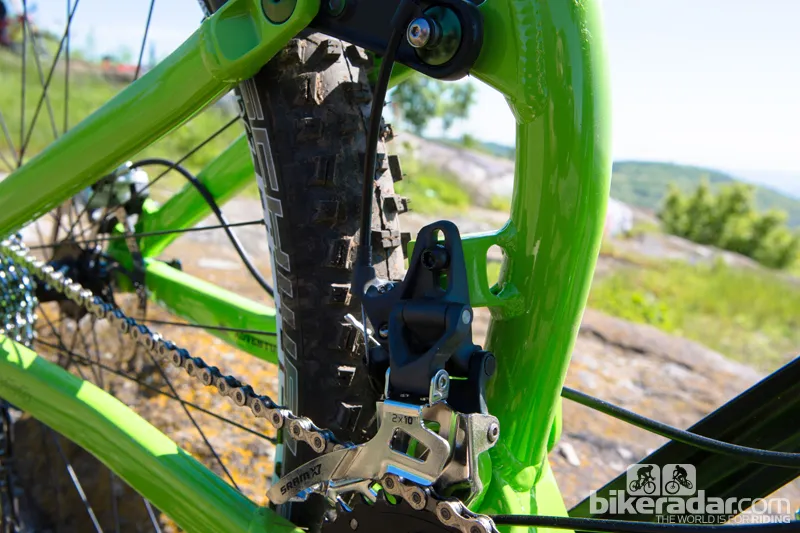
Tripple cranksets are a thing of the past, at least for these two bikes
Both bikes get dramatically shorter chainstays, slacker head tube angles and are now designed around forks with 51mm of offset. Salsa feels this will become the preferred offset number for all 29ers.
Extra attention was paid to small frame details as well as to finish quality. “Elevated fit and finish,” as the company calls it. Frame prep, such as facing and reaming, had previously been left to the mechanics assembling the bikes. Now these steps are done before the frames leave the factory.
Why Split Pivot?
The Spearfish and Horsethief had used simple single-pivot suspensions, with a top-tube mounted link driving the shock. Both used shaped seatstays designed to flex approximately 5mm as the suspension moved through its travel. The idea was that this small about of vertical deflection would replace a seatstay-mounted pivot, which would have only rotated about one degree, while adding weight and an additional set of bearings to maintain.
The downside is that the flexing stays also contributed a bit of lateral flex. In addition to rear-end flex, the Horsethief was a less capable climber than many of its competitors, tending to wallow in its midstroke and relying heavily on low-speed compression (platform) damping.
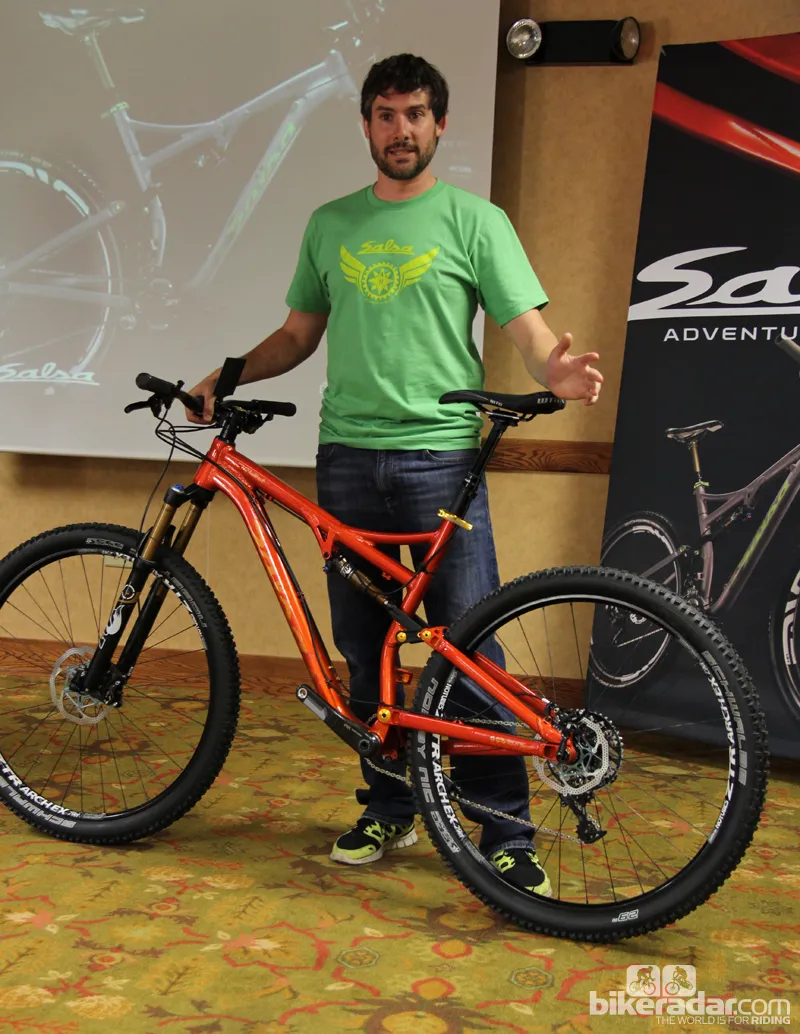
Weagle's Split Pivot design can be tuned to be firm for cross-country racing, or plush and forgiving for use on trail bikes such as the Horsethief
“We looked at a number of suspension designs,” said Salsa product development engineer Pete Koski. Salsa approached Weagle about incorporating his Split Pivot design two years ago. A year later they were riding prototypes.
Weagle patented Split Pivot in 2006 (and has spent more time than he would have liked defending it against Trek’s very similar ABP design).
Split Pivot is a single pivot suspension design that uses a rear pivot concentric to the rear axle. Weagle touts the design's ability to mitigate the affect that braking forces and pedaling input have on the action of the rear suspension, its exceptional small bump compliance, and ample mid stroke support.
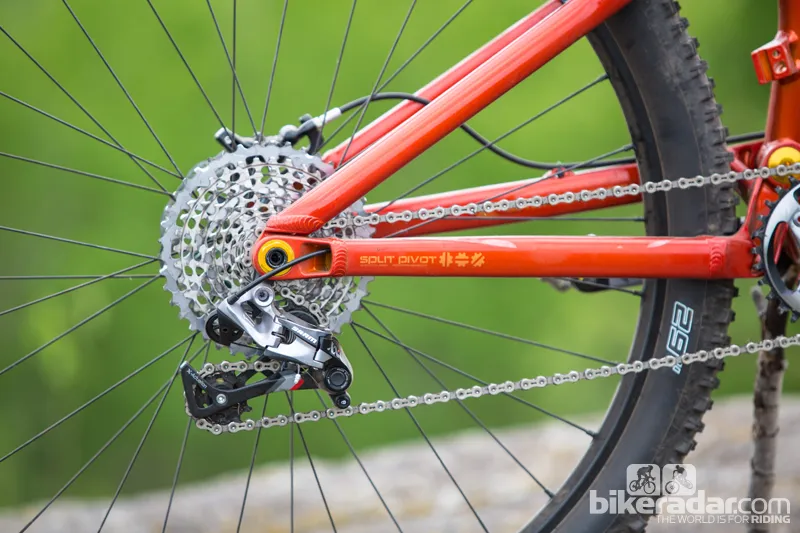
The concentric axle pivot provides a wider range of tuning options than a traditional single pivot design
As with the dw-link, Split Pivot incorporates significant amount of anti-squat, allowing a bike to ride higher in its travel. Weagle is a firm believer in using suspension kinematics (the arrangement of the suspension’s links), rather than platform/low-speed compression damping to combat rider input (pedal bob). “That leaves the damper free to do its primary job of absorbing impacts and providing traction,” said Weagle.
Increased traction and more mid-stroke support were both things Salsa was searching for. “When you got on the gas hard, they would actually squat down a little bit,” said Koski of the older generation of frames.
So, why choose Split Pivot over Weagle’s dw-link? In a word, cost. Split Pivot is less expensive to manufacture and, when fabricating frames from aluminum, is less prone to alignment issues that are critical to the performance of the dw-link. “Split Pivot allows us to capture the dw-link performance in a package that is much easier to manufacture,” said Koski.
Spearfish
Introduced in 2010, the Spearfish is designed to be an endurance race bike that’s attainable on a privateer racer’s budget. Like the previous version, the new bike is designed around a 100mm suspension fork and sports a scant 80mm of rear suspension travel.
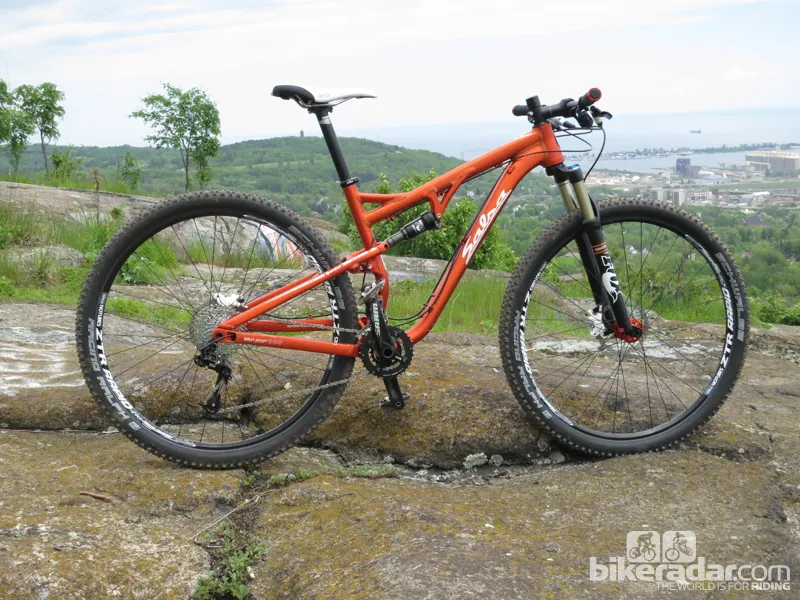
The Spearfish may be a budget-minded racer's best friend
While the intended use is the same, the frame has some considerable geometry changes: the head angle slackens from 70- to 69.3-degrees and the chainstays shrink from a whopping 455mm/17.9in to a very respectable 437mm/17.2in. It is able to accommodate a 29x2.35in tire.
The Spearfish will be available this fall in four build kits and a frame-only option. It will come in five sizes: XS though XL.
All the builds share the same 6066-aluminum frame. The top three Spearfish get anodized finishes; Salsa claims this shaves approximately 200g from the frames. The claimed frame weight for a size medium anodized frame with rear axle, shock and associated hardware is 6lb/2.72kg.
The top-of-the-line Spearfish XX1 tips the scales at 23.8lb/10.8kg and will retail for US$5,499. The Spearfish 1 will retail for US$4,099 and come with a mix of SRAM XO and X9 parts. The Spearfish 2 comes with SRAM X7 and X5 parts for US$3,299. And last but not least, the Spearfish 3 comes with Shimano Deore and SLX for a very reasonable US$2,750. All four bikes feature Fox forks and shocks as well as assortment of Salsa cockpit pieces. The frame itself, which comes in the forest green Spearfish 1 color scheme, will retail for US$1,699. (UK pricing and availability TBD.)
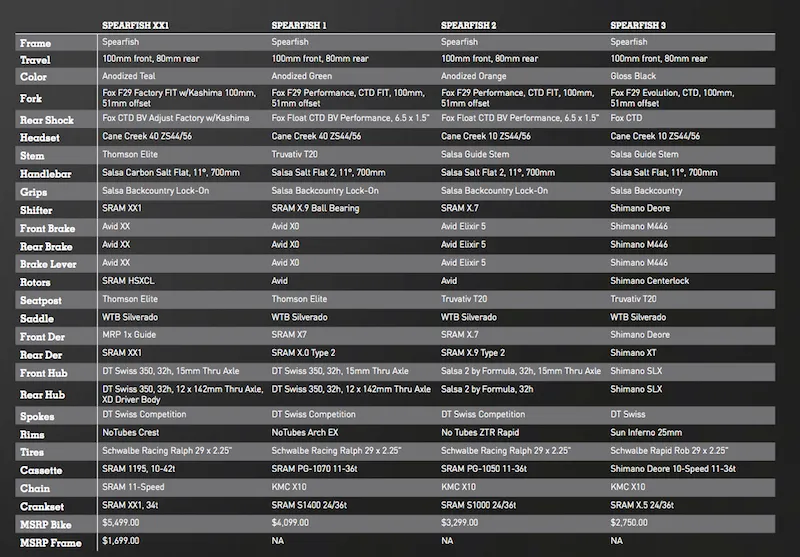
Horsethief
Introduced a year after the Spearfish, the Horsethief is the burlier older brother to the Spearfish, designed with trail riding in mind. Travel was kept the same in the latest version—120mm outback, and able to take 120-140mm suspension forks. The stock builds come with 130mm Fox forks with 32mm stanchions. According the Salsa, dealers lobbied for the lighter 32mm chassis. They felt the weight gain that accompanied the larger diameter forks was not worth the increased stiffness, given the bike’s intended role as a lightweight trail bike.
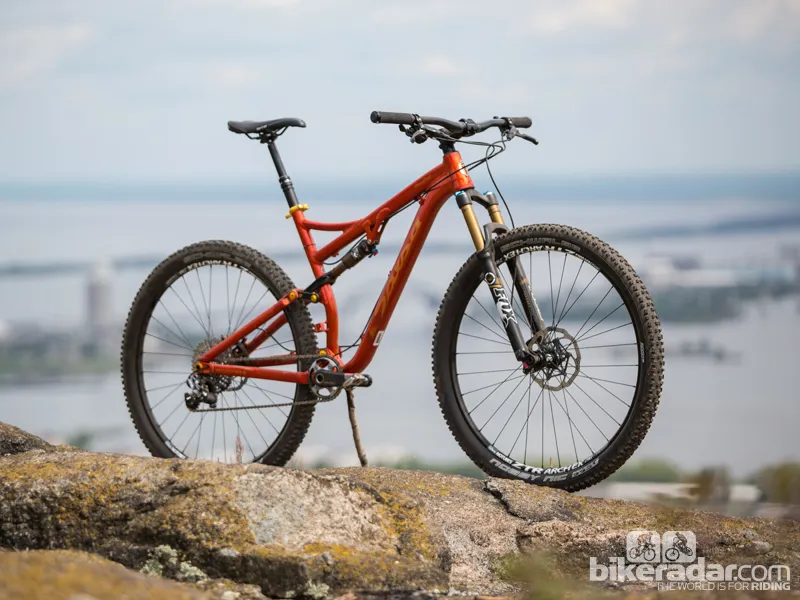
The Horsethief falls on cross-country side of the 29er trail bike spectrum, though it still has ISCG-05 guides and a dropper seatpost
Like the Spearfish, the new Horsethief sees the wheelbase move from back to front. The 68.6-degree head tube angle slackens slightly to 68.1-degrees. The once sprawling 460mm/18.1in chainstays have been reduced to 437mm/17.2in. While this is the same length as the Spearfish, the rear ends are very different, with the Horsethief using larger diameter, thicker-walled tubing for the seat- and chainstays. Maximum tire size is also 29x2.35in.
The Horsethief will also be available this fall and will be offered in three build kits and come in four sizes. (There’s no extra-small option. Salsa designers felt they would have to compromise fit and handling to build an extra small frame around the taller 130mm fork.)
The frames are also constructed from 6066 aluminum. A size medium Horsethief frame has a claimed weight of 6.6lb/3kg. The Horsethief XX1 build weighs 27lb/12.3kg (size medium) and will retail for US$5,699. Another sign that a slightly more affordable 11-speed group is on its way: the US$4,599 Horsethief 1 will be equipped with SRAM’s yet-to-be-released X01 group. The US$3,299 Horsethief 2 is the only one of the three bikes to sport a double crankset. It will come with a mix of SRAM X7 and X9 parts. The green on grey frame of the Horsethief 1 will be available as a frame-only option for US$1,699. (UK pricing and availability TBD.)
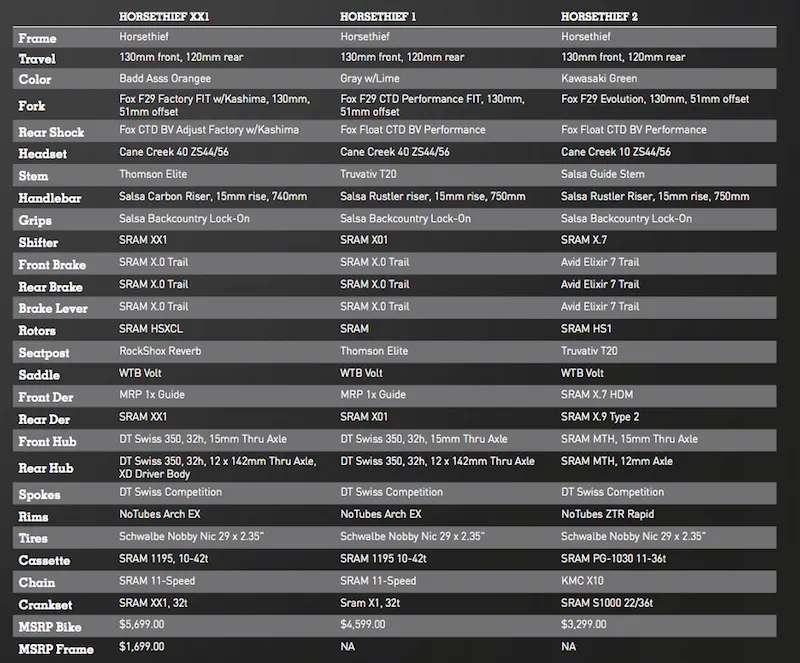
What’s next?
Salsa appears to have a few more bikes in queue for release this year. But carbon versions of these two bikes don’t appear among them, although it’s safe to assume we'll see carbon models in the future. For now it appears other carbon projects have taken precedence.
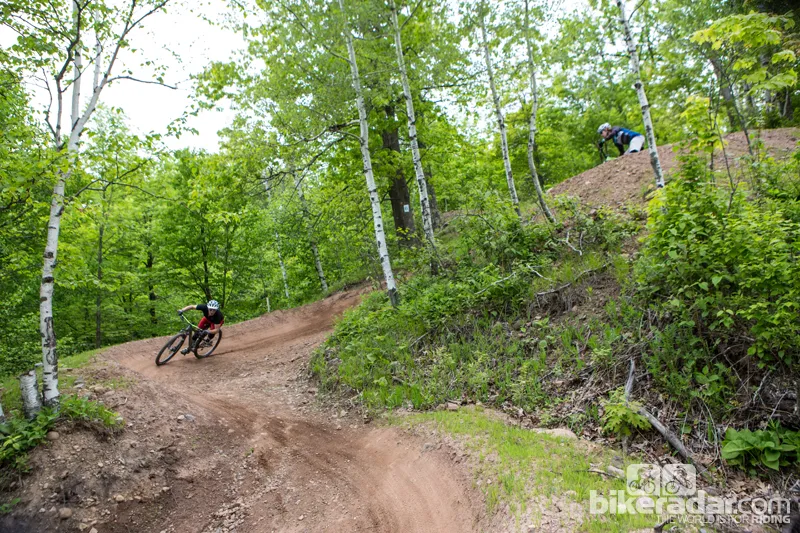
We spent several days riding both bikes on Duluth, Minnesota's expanding singletrack trail network. Click here to ride our first ride review of the Salsa Horsethief 1, and <!-- /* Font Definitions */ @font-face {font-family:"MS 明朝"; mso-font-charset:78; mso-generic-font-family:auto; mso-font-pitch:variable; mso-font-signature:1 134676480 16 0 131072 0;} @font-face {font-family:"Cambria Math"; panose-1:2 4 5 3 5 4 6 3 2 4; mso-font-charset:0; mso-generic-font-family:auto; mso-font-pitch:variable; mso-font-signature:3 0 0 0 1 0;} @font-face {font-family:Cambria; panose-1:2 4 5 3 5 4 6 3 2 4; mso-font-charset:0; mso-generic-font-family:auto; mso-font-pitch:variable; mso-font-signature:-536870145 1073743103 0 0 415 0;} /* Style Definitions */ p.MsoNormal, li.MsoNormal, div.MsoNormal {mso-style-unhide:no; mso-style-qformat:yes; mso-style-parent:""; margin:0in; margin-bottom:.0001pt; mso-pagination:widow-orphan; font-size:12.0pt; font-family:Cambria; mso-ascii-font-family:Cambria; mso-ascii-theme-font:minor-latin; mso-fareast-font-family:"MS 明朝"; mso-fareast-theme-font:minor-fareast; mso-hansi-font-family:Cambria; mso-hansi-theme-font:minor-latin; mso-bidi-font-family:"Times New Roman"; mso-bidi-theme-font:minor-bidi;} a:link, span.MsoHyperlink {mso-style-priority:99; color:blue; mso-themecolor:hyperlink; text-decoration:underline; text-underline:single;} a:visited, span.MsoHyperlinkFollowed {mso-style-noshow:yes; mso-style-priority:99; color:purple; mso-themecolor:followedhyperlink; text-decoration:underline; text-underline:single;} .MsoChpDefault {mso-style-type:export-only; mso-default-props:yes; font-family:Cambria; mso-ascii-font-family:Cambria; mso-ascii-theme-font:minor-latin; mso-fareast-font-family:"MS 明朝"; mso-fareast-theme-font:minor-fareast; mso-hansi-font-family:Cambria; mso-hansi-theme-font:minor-latin; mso-bidi-font-family:"Times New Roman"; mso-bidi-theme-font:minor-bidi;} @page WordSection1 {size:8.5in 11.0in; margin:1.0in 1.25in 1.0in 1.25in; mso-header-margin:.5in; mso-footer-margin:.5in; mso-paper-source:0;} div.WordSection1 {page:WordSection1;} --here to read about Salsa's carbon fat bike prototype.

